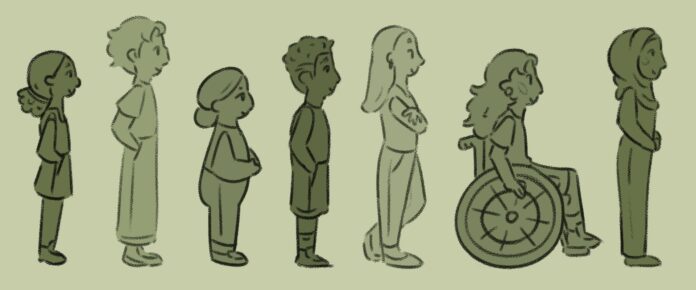By Caleb Wheeler | Staff Writer
Baylor’s diversity is increasing with the incoming class and faculty, and the university is facilitating programs and procedures to continue this upward trend.
Dr. Malcolm Foley, special adviser to the president for equity and campus engagement, said numbers may fluctuate from year to year in regard to diverse populations, but they are relatively consistent and growing. In terms of faculty in particular, he said the Office of the Provost has implemented changes to the hiring process to ensure potential faculty are not being overlooked, which will lead to an “uptick” in diversity.
This year brought in the most diverse faculty in Baylor history and a freshman class with about 38% students of color. Numbers could fluctuate, as Baylor spokesperson Lori Fogleman said the official enrollment statistics for fall 2023 will be released in late September.
From 2012 to 2022, full-time faculty went from 12.5% minorities to 19.8% minorities. Additionally, from 2016 to 2022, the percentage of students from racial and ethnic minorities went from 34.6% to 38.3%.
Professor Julio Aguilar, senior lecturer in Spanish, said people can benefit from the varying perspectives of diverse faculty and students. He said it is important for people to immerse themselves in other cultures to better understand and help those cultures. While Baylor offers school-led and student-led programs to promote inclusivity, Aguilar said “there’s more things that can be done.”
Foley echoed this and said there’s always room for growth when it comes to diversity.
“I think it’s very easy to turn issues like diversity into just a numbers game, where the goal is just to have a number of people who look a particular way,” Foley said. “Then you think everything’s done.”
Dr. Stephen Reid, vice provost for diversity and belonging, said diversity is important because students feel more understood by those with similar backgrounds.
“Being able to connect to important staff persons is one of the ways that students get a greater sense of belonging,” Reid said. “A staff that is able to connect culturally with students provides a certain level of comfort.”
Foley said he believes he should not have to see another person of color to feel understood and accepted, but a more diverse and cognizant faculty across departments is key to having representation at all levels. He said when a student meets a faculty member of the same racial or cultural background, “there’s an assumed understanding that this is somebody who actually understands me.”
“It ought to be the case that I don’t have to just find another Black faculty member to understand me or to be deeply invested in me, but it’s often the case because of how race and ethnicity usually function in this country,” Foley said. “We’ve become divided in some ways that are unhelpful for all of us.”
Foley said Baylor wants diversity to be visible not only in the faculty and student populations but also on the campus itself. He said Baylor’s statues of the first Black graduates are only the beginning of a transformation to deeply explore university history.
“[The new statues] give us an opportunity to narrate what, for me, are three steps of the gospel,” Foley said. “Also, [they] are a piece of the process we’re going through of reckoning, repenting and recognition. [It] is necessary that we reckon with our past, even in its darkness. Then, we repent of it — that we turn from our sins toward the Lord and that it manifests itself in reconciliation.”
This transformation will include a deep dive to find untold stories as well as the addition of history blocks around Judge Baylor to tell more about the university’s namesake and other founders. In addition, Foley said Baylor will work on constructing a memorial to the enslaved people who built the university.






